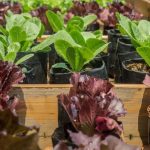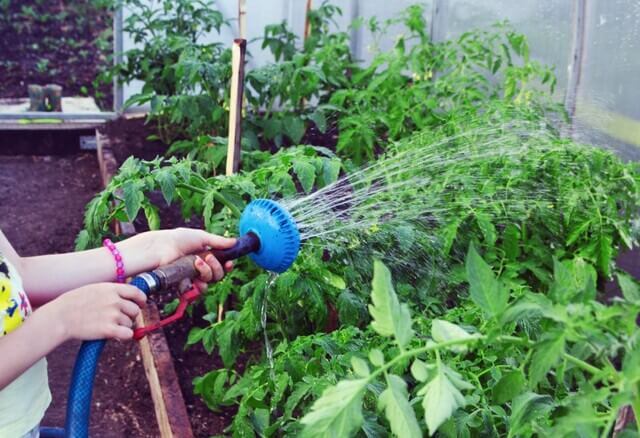Planting guides for vegetable gardens are essential resources for novice and experienced gardeners alike. Whether you’re just starting or looking to enhance your gardening skills, having a comprehensive understanding of the basics is crucial for a successful harvest. From selecting the right vegetables to maintaining soil quality, this article will provide you with valuable insights into creating a thriving vegetable garden.
One of the most rewarding experiences of vegetable gardening is being able to enjoy fresh, homegrown produce right from your backyard. Not only does it provide a sustainable source of food, but it also offers numerous health benefits. By growing your own vegetables, you can ensure that they are free from harmful chemicals and pesticides, making them a healthier option for you and your family.
Before getting started with your vegetable garden, it’s important to consider factors such as location, soil quality, and climate in order to maximize your yields. By following the guidelines outlined in this article, you’ll learn how to select the best spot for your garden, choose suitable vegetables for your region, and prepare the soil properly to promote healthy plant growth.
With proper planning and care, you’ll be on your way to cultivating a bountiful harvest in no time.
Benefits of Growing Your Own Vegetables
Growing your own vegetables at home offers a wide range of benefits that go beyond just having access to fresh produce. Here are some reasons why starting a vegetable garden can be rewarding:
1. Health Benefits – By growing your own vegetables, you have control over what pesticides or chemicals, if any, are used during the cultivation process. This means you can enjoy fresh, organic produce that is free from harmful substances. Additionally, homegrown vegetables are often more nutritious as they are picked at peak ripeness and consumed shortly after harvesting.
2. Cost Savings – Planting your own vegetable garden can help you save money in the long run. The initial investment in seeds, soil, and tools may seem costly, but the yields from your garden can offset grocery costs over time. You also have the option to grow high-value crops that are expensive to purchase at supermarkets.
3. Environmental Impact – Growing your own vegetables reduces the carbon footprint associated with transporting produce from farms to stores. Additionally, by using natural fertilizers and composting kitchen scraps, you contribute to a healthier ecosystem in your backyard. Sustainable gardening practices help conserve water and promote biodiversity in your local environment.
Incorporating these benefits into your own vegetable gardening journey can lead to not only a bountiful harvest but also a sense of pride and accomplishment for nurturing plants from seed to plate. By following planting guides for vegetable gardens specific to your region, you can maximize the benefits and enjoy the rewards of growing your own food.
Choosing the Right Location for Your Vegetable Garden
When it comes to starting a vegetable garden, one of the most crucial decisions you’ll make is choosing the right location. The success of your garden largely depends on this factor, as different vegetables have varying requirements for sunlight, soil quality, and drainage. Here are some key considerations to keep in mind when selecting the perfect spot for your vegetable garden.
Sunlight Exposure
Most vegetables require at least 6-8 hours of sunlight each day to thrive. When choosing a location for your vegetable garden, observe how the sun moves across your yard throughout the day. Select an area that receives ample sunlight, especially during the morning and early afternoon hours when it’s most beneficial for plant growth.
Soil Quality
The quality of your soil is another important factor to consider when siting your vegetable garden. Conduct a soil test to determine its pH level and nutrient content. Most vegetables prefer well-draining soil with a pH level between 6.0 and 7.0. If your soil is lacking in nutrients or has poor drainage, you may need to amend it with compost or other organic matter to create an ideal growing environment for your plants.
Proximity to Water Source
It’s essential to place your vegetable garden near a convenient water source, such as a hose or irrigation system. Vegetables require consistent watering throughout their growing season to develop properly and produce bountiful harvests. By situating your garden close to a water supply, you’ll make it easier to maintain proper moisture levels and ensure the health of your plants.
By carefully considering factors like sunlight exposure, soil quality, and proximity to water, you can choose the perfect location for your vegetable garden. Following these guidelines will set you up for success in growing a thriving garden full of healthy and delicious homegrown produce. Remember that proper planning and preparation are key elements in creating a fruitful vegetable garden that will bring joy and satisfaction throughout the growing season.
Selecting Vegetables to Plant Based on Your Region
When it comes to planning your vegetable garden, one of the most crucial factors to consider is the region in which you live. Different vegetables thrive in different climates and growing conditions, so it’s essential to select varieties that are well-suited to your specific area. By choosing vegetables that are adapted to the local climate and soil conditions, you can increase the likelihood of a successful harvest.
One important resource to consult when selecting vegetables for your region is planting guides for vegetable gardens. These guides provide valuable information on which vegetables are best suited for your specific climate zone, as well as tips on when and how to plant them. Whether you live in a cool, temperate climate or a hot, arid region, there are planting guides available that can help you make informed decisions about which vegetables to grow.
In addition to consulting planting guides, another helpful strategy for selecting vegetables based on your region is to talk to local gardening experts or experienced gardeners in your community. They can provide valuable insights into which crops have performed well in the past and offer recommendations for varieties that are likely to thrive in your area.
By taking the time to research and plan accordingly, you can set yourself up for a bountiful vegetable garden harvest that is tailored to your specific region.
| Vegetable | Recommended Region |
|---|---|
| Tomatoes | Warm and sunny climates |
| Lettuce | Cooler regions with partial shade |
| Zucchini | Wide range of regions with fertile soil |
Understanding Soil Preparation and Maintenance
Soil preparation and maintenance are crucial aspects of successfully growing vegetables in your garden. Before you start planting, it is essential to ensure that your soil is in optimal condition to support healthy plant growth. One key factor to consider is the pH level of the soil, as different vegetables thrive in varying pH ranges. Conduct a soil test to determine the current pH level and make any necessary adjustments by adding amendments such as lime or sulfur.
In addition to pH levels, soil texture is another important consideration. Vegetables grow best in well-draining soil that allows for proper root development and prevents waterlogging. If your soil has poor drainage, you can improve it by incorporating organic matter like compost or aged manure. This will not only improve drainage but also provide essential nutrients for your plants.
Regular maintenance of your soil is equally important to ensure long-term productivity in your vegetable garden. Consider practicing crop rotation to prevent nutrient depletion and minimize the buildup of pests and diseases in the soil. Additionally, mulching can help retain moisture, regulate soil temperature, and suppress weed growth. By taking care of your soil through proper preparation and ongoing maintenance, you set a solid foundation for a successful vegetable garden.
| Aspect | Recommendation |
|---|---|
| pH Level | Conduct a soil test and adjust pH with lime or sulfur if needed. |
| Soil Texture | Incorporate organic matter like compost to improve drainage and provide nutrients. |
| Maintenance | Practice crop rotation and use mulch to preserve soil health and productivity. |
Importance of Watering and Fertilizing Your Vegetable Garden
Watering and fertilizing are essential aspects of maintaining a successful vegetable garden. Proper hydration is crucial for the growth and development of plants, as water helps transport nutrients throughout the plant and aids in photosynthesis. Inadequate watering can lead to stunted growth, wilting, and decreased productivity. On the other hand, overwatering can result in root rot and other issues that can harm your plants. It is important to find the right balance and provide consistent moisture to your vegetable garden.
In addition to watering, fertilizing plays a key role in ensuring that your vegetables have access to essential nutrients for healthy growth. Different vegetables have varying nutrient requirements, so it is important to choose the right type of fertilizer based on the needs of your plants.
Organic fertilizers, such as compost or manure, are popular choices for many gardeners as they improve soil structure and fertility while promoting microbial activity. Synthetic fertilizers are also available and can be customized to provide specific nutrients needed by your plants.
An important consideration when watering and fertilizing your vegetable garden is understanding the individual requirements of each vegetable species you are growing. Some vegetables may require more frequent watering, while others may be more sensitive to over-fertilization. Paying attention to the specific needs of each plant will help you achieve optimal growth and yield in your garden. By following proper watering and fertilizing practices, you can ensure that your homegrown vegetables thrive throughout the growing season.
Best Practices for Planting and Transplanting Vegetables
When it comes to planting and transplanting vegetables in your garden, there are a few best practices that can help ensure the success of your crops. One key aspect to consider is the timing of planting.
Different vegetables have different preferences when it comes to temperature and season, so it’s important to follow planting guides for vegetable gardens specific to your region. Some vegetables thrive in cooler temperatures while others prefer warmer weather, so be sure to plant at the right time for each crop.
Proper spacing is another important factor when planting vegetables. Overcrowding can lead to competition for nutrients, sunlight, and water, resulting in stunted growth and lower yields. It’s essential to follow recommended spacing guidelines for each type of vegetable you plant. This will promote healthy plants and optimize their growth potential. Additionally, consider using techniques such as companion planting to maximize space and deter pests.
When transplanting seedlings into your garden, handle them with care to avoid damaging their delicate roots. Make sure the soil is well-prepared before transplanting by amending it with compost or organic matter to provide a nutrient-rich environment for your plants. Water the transplants thoroughly after planting to help them establish roots in their new location.
Remember to continue providing adequate water and nutrients as they grow to support their development and overall health throughout the growing season. Following these best practices will set you on the path towards a bountiful harvest from your vegetable garden.
Pest and Disease Management in Vegetable Gardens
Pests and diseases can pose significant threats to the health and productivity of your vegetable garden. Taking proactive measures to prevent and manage these issues is crucial in ensuring a successful harvest. Here are some important tips and strategies for effectively managing pests and diseases in your vegetable garden:
- Identify Common Pests: Familiarize yourself with the common pests that are prevalent in your region and can potentially harm your vegetable plants. Whether it’s aphids, caterpillars, or beetles, knowing what to look out for will help you take timely action.
- Implement Integrated Pest Management (IPM) Techniques: Instead of relying solely on chemical pesticides, consider adopting integrated pest management techniques that incorporate biological controls, cultural practices, and mechanical controls. This holistic approach can help minimize the use of harmful chemicals while effectively managing pests.
- Practice Crop Rotation: Rotating your crops annually can help disrupt the life cycles of pests and pathogens that are specific to certain plant families. This simple practice can reduce the likelihood of pest infestations and soil-borne diseases in your vegetable garden.
In addition to pests, diseases can also wreak havoc on your vegetable plants if left unchecked. Here are some essential strategies for disease management in your vegetable garden:
- Select Disease-Resistant Varieties: When choosing which vegetables to plant in your garden, opt for varieties that are known to be resistant to common diseases prevalent in your area. This preemptive measure can significantly reduce the risk of disease outbreaks.
- Maintain Good Air Circulation: Proper air circulation around your plants can help prevent the buildup of moisture, which creates an ideal environment for fungal diseases to thrive. Trim overcrowded plants, stake tall varieties, and space out your crops accordingly to promote good airflow.
- Practice Sanitation: Regularly remove dead or diseased plant material from your garden bed to prevent the spread of fungal spores or bacteria. Clean tools after each use, avoid working in wet conditions, and practice good hygiene practices to minimize the risk of introducing pathogens into your garden.
By implementing these pest and disease management strategies in your vegetable garden, you can protect your plants from potential threats and ensure a bountiful harvest of healthy homegrown vegetables. Remember that prevention is key when it comes to maintaining the vitality of your garden ecosystem.
Harvesting and Storing Your Homegrown Vegetables
Harvesting Your Homegrown Vegetables
When it comes to harvesting your homegrown vegetables, timing is key. Different vegetables have varying harvest times, so it’s essential to know when each crop is at its peak for picking.
For example, leafy greens like lettuce and spinach are best harvested when they are young and tender, while root vegetables such as carrots and potatoes should be harvested once they have reached a suitable size. It’s important to regularly check on your plants to ensure you’re not missing the ideal harvest window.
In addition to timing, proper harvesting techniques can impact the quality of your vegetables. Use sharp pruners or shears to avoid damaging the plant while harvesting. Be gentle when handling delicate produce like tomatoes or berries to prevent bruising. And remember, some crops like zucchini and cucumbers can grow quickly, so be vigilant in picking them before they become overripe.
Storing Your Harvested Vegetables
After harvesting your homegrown vegetables, proper storage is crucial to maintain their freshness and flavor. Some vegetables should be stored in a cool, dark place like a root cellar or refrigerator to extend their shelf life. For example, onions, garlic, and potatoes prefer a cool environment with good airflow to prevent sprouting.
Other vegetables like tomatoes and peppers are best kept at room temperature but away from direct sunlight. Storing these crops in a paper bag or on a countertop can help maintain their flavor and texture. Leafy greens should be washed, dried thoroughly, and stored in a breathable container in the fridge to keep them crisp.
Tips for Maximizing Storage Life
To maximize the storage life of your homegrown vegetables, there are some additional tips you can follow. Avoid washing produce before storing as moisture can speed up spoilage. Instead, wait until you’re ready to use the vegetables before washing them. Keep an eye on any signs of decay or mold and remove affected pieces immediately to prevent further contamination.
Consider preserving excess harvest through methods like freezing, pickling, or canning. This allows you to enjoy your homegrown produce long after the growing season has ended. By following these guidelines for harvesting and storing your vegetables properly, you can enjoy the fruits of your labor well beyond harvest time.
Conclusion
In conclusion, creating a thriving vegetable garden requires careful planning and attention to detail. By following the planting guides for vegetable gardens and incorporating the tips discussed throughout this article, you can set yourself up for success in growing your own fresh produce at home.
One of the key takeaways from this guide is the importance of selecting vegetables that are well-suited to your specific region. By understanding your local climate and growing conditions, you can choose plants that will thrive in your garden and yield a bountiful harvest.
Additionally, proper soil preparation, watering, fertilizing, and pest management are essential components of successfully maintaining a vegetable garden. By staying on top of these tasks and regularly monitoring your plants for any signs of issues, you can ensure that your garden remains healthy and productive throughout the growing season. With dedication and patience, you can enjoy the satisfaction of harvesting and storing your own homegrown vegetables straight from your backyard.
Frequently Asked Questions
What Is a Good Layout for a Vegetable Garden?
A good layout for a vegetable garden typically involves organizing plants based on their sunlight and water requirements. This helps ensure each plant gets the necessary resources for healthy growth. Raised beds or rows can also help maximize space and ease of maintenance.
What Order Should I Plant My Vegetable Garden?
When planning the order to plant your vegetable garden, it’s important to consider factors like plant height, sun exposure, and water needs. Taller plants should be placed in a spot where they won’t shade smaller ones. It’s also helpful to group together vegetables with similar watering needs to simplify irrigation.
What Vegetables Should Not Be Planted Next to Each Other?
Certain vegetables should not be planted next to each other due to compatibility issues that can affect growth or attract pests. For example, potatoes and tomatoes are both susceptible to similar diseases, so they shouldn’t be planted near each other. Researching companion planting guides can help determine which veggies should be kept apart in the garden.

If you’re looking to get into vegetable gardening, or are just looking for some tips on how to make your current garden better, then you’ve come to the right place! My name is Ethel and I have been gardening for years. In this blog, I’m going to share with you some of my best tips on how to create a successful vegetable garden.





